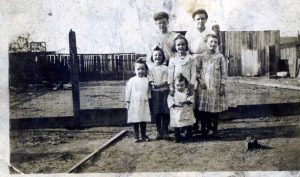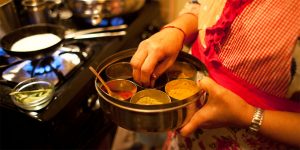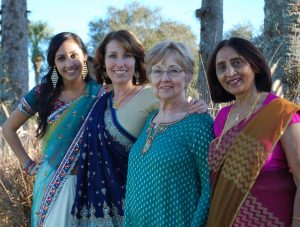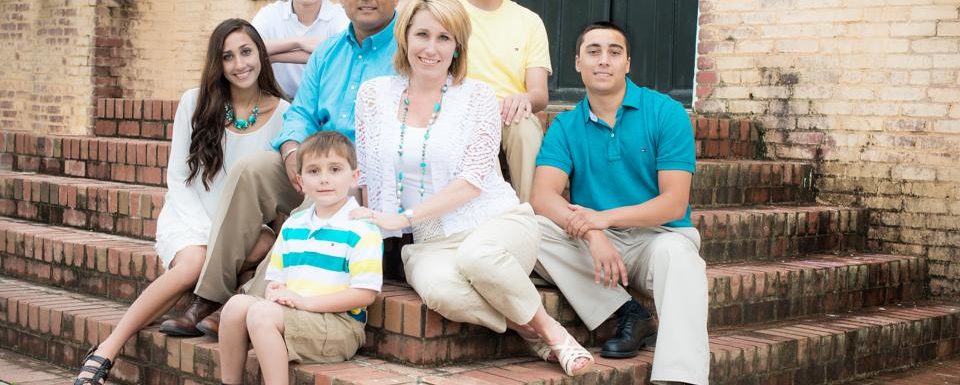
An Ancestry.com DNA test confirms it. I’m as white as white comes (as if there were any doubt). I burn after 30 seconds in the sun, just like the rest of my family. I come from Kentucky folk who ate biscuits and sausage gravy, ham hocks in their green beans, and went to church. My dad climbed the corporate ladder and we lived in the suburbs.
So what happened when I married into Indian culture? Let me explain.
My husband and I met in 1988 on a humid Memphis night. I was sixteen and scooped ice cream at the local Baskin Robbins. One night at closing time, with Def Leppard blasting from my smuggled boom box, my co-worker and I perched ourselves on the counter, talking boys and eating fat scoops of rocky road. The door opened and in came the cutest Indian guy I had ever laid eyes on in my life. He waltzed himself behind the counter and introduced himself as Dharmesh, a friend of the owner’s son. He was there to get a stack of paper cups for his own Baskin Robbins across town, he explained. But, his words faded away as I watched his lips form a lazy grin while he talked to me, and his gorgeous black eyes locked in on me. I flipped my spiral-permed hair away from my face and held his eyes with mine. From that moment on, I was done. I had no idea how much my world would change after meeting him.
He came to my door a few nights later for our first date, smelling of Drakkar Noir and looking a little Miami Vice in his white pants and loafers without socks. My father grunted at him. My daddy was less than pleased that my date was 19 and a sophomore in college, and the fact that he was Indian snuffed hope of any warm welcome that night.
In Memphis, as well as in Kentucky where my parents were from, we all understood that white people stuck to our own kind, and this boy in our living room was far from white. But, the problem with Indians was not really their skin color. The issue was that we “true Americans” all just knew those eastern people treated their women like second class citizens. Indians and Arabs (pronounced Ay-rabs by some) were chauvinists and women were all servants. But when Dharmesh looked at me, my legs melted under me, and I knew that wasn’t who he was. So, before he came, I assured my mom all would be fine. Besides, I told her,
“Mom, like chill out. I’m totally not marrying any guy I meet now. Like, I’m only sixteen!
Ha. Famous last words.
Dad shook his hand stiffly, and pretended not to listen when Dharmesh assured him, “Sir, yes sir,” that he would drive safely and have me home by curfew. I’m glad Dad didn’t own a gun, because I’m sure he would have been cleaning it in the living room that night. Thank God, he had only his eyes for a threat, and aimed them menacingly at Dharmesh until the door shut behind us.
The thrill of that first date still makes my toes tingle. On a bench under the starry sky on the banks of the Mississippi River, I stumbled and fell doe-eyed in love with my soul mate. Little did I know, falling in love with this gentlemanly, brilliant, and handsome Indian guy meant a mind-spinning tumble into a rabbit hole of cultural confusion.
We dated for three and a half years, during which time, I was a dirty little secret kept from Indians in his community, and during which I kept him on the down-low from my all white friends at school. He never treated me as “less-than” the entire time we dated. On the contrary, he put me on a pedestal, opening doors, buying me gifts, and graciously listening to my teenage chatter late into the nights when he should have been studying for college exams. We were equals, and maybe I was even a little bit of a princess to him.
My parents warmed to him when they saw how sincere he was about taking care of their baby girl, and gave their blessing. Things changed when we got engaged, though, and I was introduced to the real world of Indian culture. I found out that the roles of men and women really are drastically different than in western culture, and the little hairs on my neck bristled the more I experienced.
I was flabbergasted to find out women do all of the cooking,and when I saw men sitting and  talking, being served glasses of water by women, I gritted my teeth. I never served my Dad! When I found out that men eat together first and women eat together last after serving the men, I almost puked. I felt like inviting Gloria Steinem over to incite rebellion, but quickly learned, thanks to Dharmesh putting me in a figurative headlock to hold me back, that this was their culture not mine, and I had no right to judge. But, I also felt like I had no voice.
talking, being served glasses of water by women, I gritted my teeth. I never served my Dad! When I found out that men eat together first and women eat together last after serving the men, I almost puked. I felt like inviting Gloria Steinem over to incite rebellion, but quickly learned, thanks to Dharmesh putting me in a figurative headlock to hold me back, that this was their culture not mine, and I had no right to judge. But, I also felt like I had no voice.
The problems came when I was expected to follow these customs, and I just couldn’t do it. As newlyweds, Dharmesh and I argued.
“Why can’t you stand up for me with your family?”
“Because it’s not my place to change them.”
“But, it’s not fair for me to have to sit without you at these functions. You’re the reason I’m there.”
“It’s not about fair, honey. It’s culture.”
Culture-schmulture…I didn’t buy it.
For years, the culture gap between my husband and I, and between me and his family, remained gaping. I tried to understand the Indian mind from the inside out, doing internet research, reading fiction by South Asian authors, and learning family lore from his parents. When opportunities arose, I participated in rituals during weddings, and dutifully hung out with his family. As a white woman, I always felt like an outsider and couldn’t get past the gender roles. Frustrations still filtered into my life. Academically, cultural relativism sounded great, but to walk the walk personally was tough. I began writing fiction during this time that was both therapeutic and too explosive to ever see the light of day.
A strange thing happened, though. Over the next couple of decades, we all got older, and for risk of sounding jaded, life broke us in. His family was no longer new to the country and gender segregation relaxed. Dharmesh began to keep me by his side at Indian gatherings, because he  respected my cultural values, too. As our five children came along, I fell in love with them and the culture India gave them, because it is a part of them. However, I stayed vocal that our only daughter would not be raised on the fringe or in the kitchen. As it turned out, though, God has a sense of humor. Her favorite thing to do as a child was to cook with Ba at her house. Today, at age 21, food is her passion. She is a foodie and is beginning a career in the hospitality industry.
respected my cultural values, too. As our five children came along, I fell in love with them and the culture India gave them, because it is a part of them. However, I stayed vocal that our only daughter would not be raised on the fringe or in the kitchen. As it turned out, though, God has a sense of humor. Her favorite thing to do as a child was to cook with Ba at her house. Today, at age 21, food is her passion. She is a foodie and is beginning a career in the hospitality industry.
My teenage spiral-permed hair is a mom-bob now, and my husband’s jet black hair is more salt than pepper. It doesn’t matter anymore if he and I are chatting in same-sex groups across the room from each other at a family gathering, or holding hands in front of our kids. We know where we stand with each other, and it is always together.
So, what happened when I married into Indian culture? 
I now blog and write for online magazines about our mishaps and successes and can humbly say that my posts have touched people’s lives. Writing my debut novel The Unexpected Daughter helped me to make peace with cultural differences in my own family, and has given me a platform to expand others’ perceptions of culture. While I used to write to exorcise my cultural confusion, I am now committed to writing both fiction and non-fiction that sheds light on all that is ugly and beautiful in the name of culture.
When I married into Indian culture, I became something more than a white southern girl or an Indian guy’s wife. I found my voice and I love using it.
